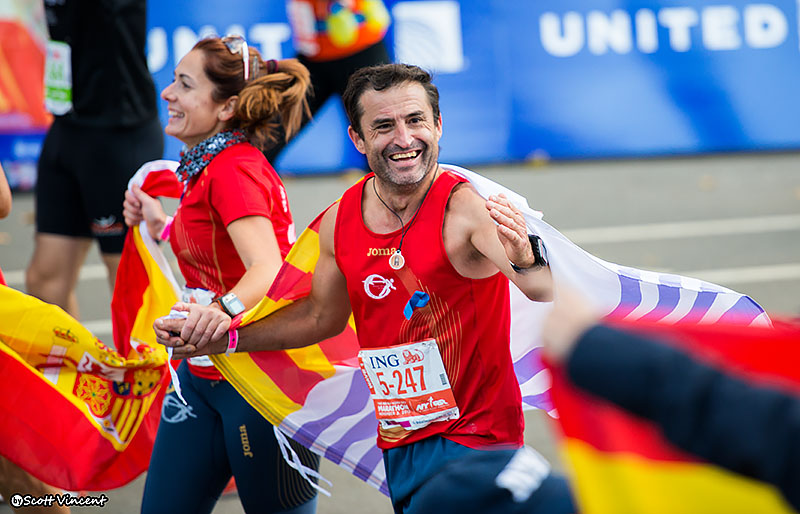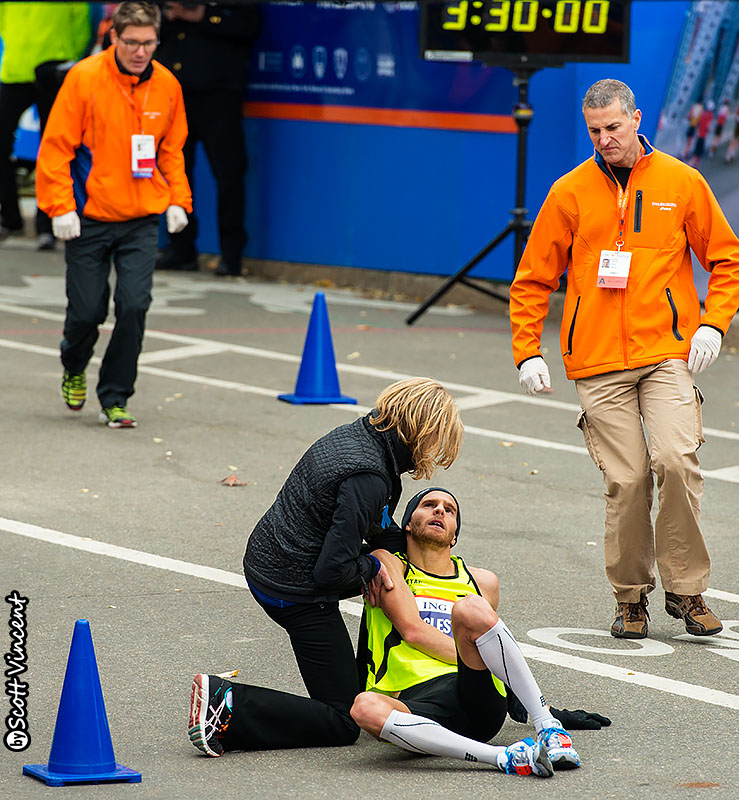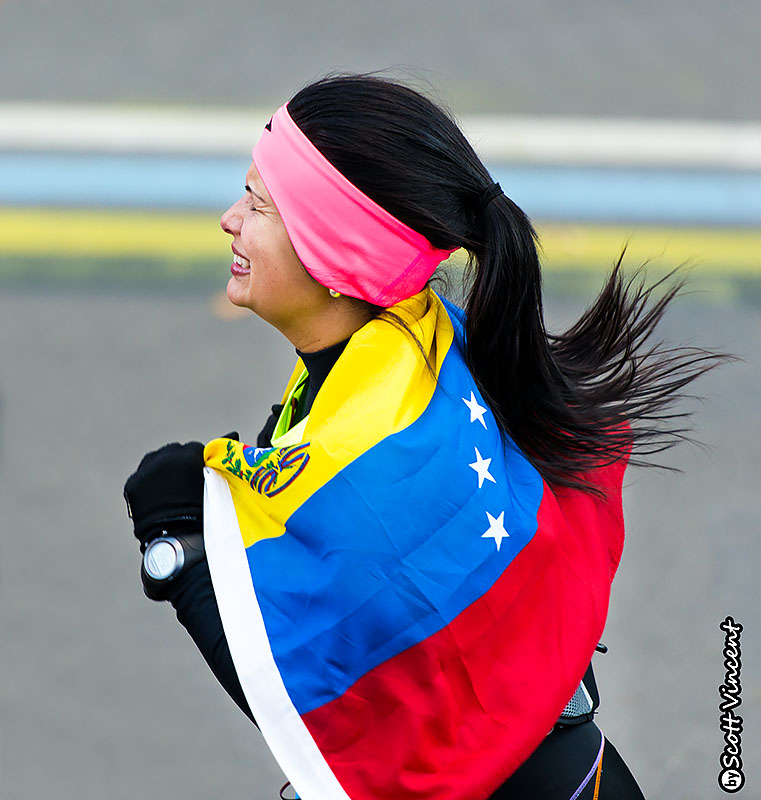What do 3.1, 5, 6.2, 10, 13.1, 26.2 have in common? It’s not a Fibonacci series! These are some of the standard distances for road race runners, with 3.1 and 6.2 in kilometers, and the rest in miles, and with the marathon at 26.2 miles being the gold standard of impressiveness for runners. Running a marathon is like a badge of honor for those that complete this impressive feat.
 (A runner and his partner proudly display their country’s flag and react to someone in the crowd, just 50 feet from the finish line. Nikon D800, 70-200mm VR II, ISO 400, @f/2.8, 1/800 sec)
(A runner and his partner proudly display their country’s flag and react to someone in the crowd, just 50 feet from the finish line. Nikon D800, 70-200mm VR II, ISO 400, @f/2.8, 1/800 sec)
The New York City Marathon is one the most fun events I photograph every year. I’ve been going for about 10 years straight, except for the one that was canceled last year because of the mess from Tropical Storm Sandy. As a result of the skipped year, more runners than ever participated this year in the world’s largest marathon with 50k+ runners finishing.
The NYC Marathon is my frame of reference for this article, but there are road races being conducted nearly every weekend in most every US state. Any one of these is a great opportunity to watch and photograph – and to get motivated to increase your own exercise level if that is on your list of New Year’s resolutions!
I’ve placed myself at different points along the 26.2 mile route, and there are no bad spots to photograph the runners. On top of the excitement of seeing so many runners, it’s a great opportunity to fine tune your photographic skills. If you’ve always wanted to learn to use “back-button” focusing, this is your chance (See Artie’s great article on this topic here: http://www.birdsasart-blog.com/2011/09/13/rear-focus-tutorial/). I use this technique 100% of the time at road races and when photographing birds in flight.
 (One of the lead runners collapsing just after the finish line being attended to Mary Wittenberg, the President and CEO of New York Road Runners. Please note that the clock in the background is for a different heat. This runner finished in 14th place with a time of 2:16:35. Nikon D800, 70-200mm VR II, ISO 400, @f/4, 1/1250 sec.)
(One of the lead runners collapsing just after the finish line being attended to Mary Wittenberg, the President and CEO of New York Road Runners. Please note that the clock in the background is for a different heat. This runner finished in 14th place with a time of 2:16:35. Nikon D800, 70-200mm VR II, ISO 400, @f/4, 1/1250 sec.)
Likewise, it’s a great way to learn to pan your lens, pick out a runner, focus, compose and shoot – all in a split second. You can be sure that your reflexes and abilities as a photographer will be much improved after a single race.
This year was even more special for me because it was the first one that I’ve had the opportunity to be in the grandstand right at the finish line. The shear excitement of watching and photographing the sea of runner as they see the finish for the first time is incredibly exhilarating. I stood and photographed for 6 hours straight without getting tired. I was surrounded by so much energy, cheering crowds and dance songs blasting – For me, it was one of the best days I’ve ever had photographing, and I wanted to share it with others.
 (About 4 hours into the race, this runner is overwhelmed with joy as she sees the finish line for the first time, realizing that she’s about to complete the world’s greatest marathon. Nikon D800, 70-200mm VR II, ISO 400, @f/2.8, 1/640 sec.)
(About 4 hours into the race, this runner is overwhelmed with joy as she sees the finish line for the first time, realizing that she’s about to complete the world’s greatest marathon. Nikon D800, 70-200mm VR II, ISO 400, @f/2.8, 1/640 sec.)
It doesn’t matter if it’s 3.2 or 26.2, try to find a local running race, position yourself near the finish line, and you can’t help but become a better photographer and maybe even a little motivated to start running! Who knows, maybe 2014 will be my year to run the NYC Marathon – Watch this space to find out!
To see a bunch more photographs, I’ve compiled over a hundred from this year’s NYC Marathon finish line and made it into a video that you can find here: https://www.youtube.com/watch?v=Hhvxqza2CgI
